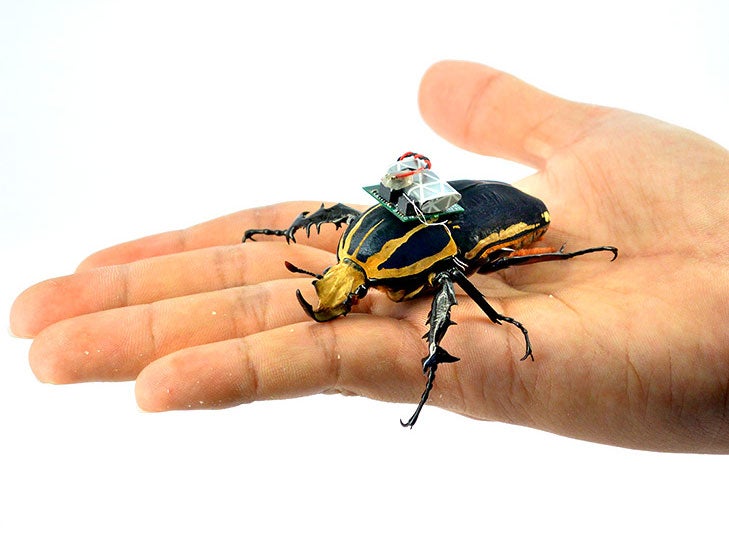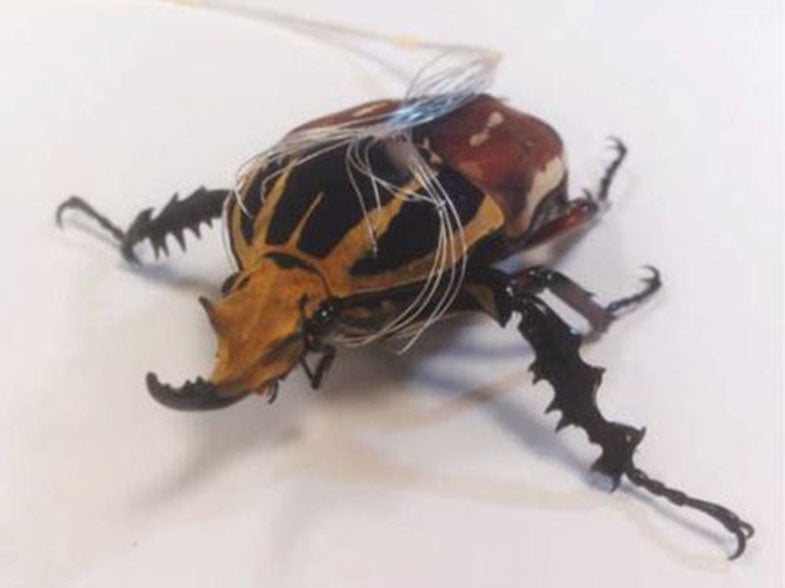Remote-control cyborg beetle developed by scientists
Scientists used implants in the beetle's muscles to control its walking speed and direction

Researchers have created a 'living drone' by controlling a beetle's movements using electronics.
By mounting a radio reciever on the insect's body and implanting electrodes into its muscles, the scientists were able to control its walking speed, direction and stride length.
The team, from Singapore's Nanyang Technological University, say this is the first time the detailed walking movements of an insect have been controlled by humans.

Their achievements follow on from a project they conducted with University of California Berkeley scientists last year, in which they discovered how to control a beetle's flight using an electronic 'backpack'.
It may be tempting to feel sorry for the insects used in this project, but the researchers believe they could have an important humanitarian use one day.
Professor Hirotaka Sato, who worked on both projects, said last year: "This technology could prove to be an improved alternative to remote-controlled drones as it could go into areas which were not accessible before."
"For example, it could be used in search-and-rescue missions as it could go into small nooks and crevices in a collapsed building to locate injured survivors."
These live insect drones have a number of major advantages over mechanical versions. Rather than building a robot to do the same job using hundreds of tiny components, the scientists simply used the beetle's natural form as a platform for their technology.
Beetles obviously don't need to be recharged or maintained in the same way machines do, and their movement systems have already been perfected over millions of years of evolution, making life easier for the scientists.
For example, programming a robot to climb over an obstacle would take years of difficult research and development. With the beetle, a 'pilot' could simply turn off the controller, letting the beetle cross the obstacle by itself.
A study detailing the project has been published in the high-profile Journal of the Royal Society Interface publication.
The researchers say that their achievements pave the way for future research to improve the precision of the beetle's movements.
Join our commenting forum
Join thought-provoking conversations, follow other Independent readers and see their replies
Comments